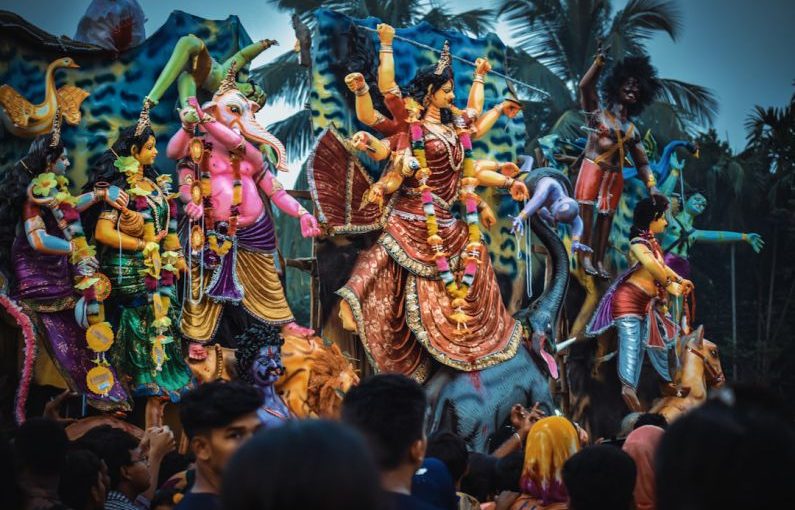Colors play a vital role in the rich tapestry of Indian culture, weaving through various aspects of life from spirituality to celebrations. The significance of colors in Indian culture is deeply rooted in traditions, beliefs, and societal norms, making them an integral part of everyday life.
Colors in Religion and Spirituality
In Indian culture, colors are not just visual elements but carry profound spiritual meanings. Each color is associated with different deities, rituals, and beliefs. For example, the color red symbolizes power, passion, and fertility and is often associated with the goddess Durga. Yellow is considered auspicious and is associated with knowledge and learning, represented by the god Vishnu. White symbolizes purity and is often worn during religious ceremonies and rituals. The color saffron is associated with renunciation and spiritual growth and is commonly worn by monks and ascetics.
Festivals and Celebrations
Indian festivals are a riot of colors, with each festival having its own unique color significance. Holi, known as the festival of colors, is a vibrant celebration where people drench each other in colored powders and water. The colors used during Holi symbolize the arrival of spring, the victory of good over evil, and the playful nature of the festival. Diwali, the festival of lights, is a time when homes and streets are decorated with colorful lights, rangoli designs, and vibrant decorations. Each color used during Diwali signifies prosperity, happiness, and the triumph of light over darkness.
Traditional Clothing
Indian traditional clothing is a canvas of colors, with each color carrying its own symbolism and significance. For example, red is considered an auspicious color for weddings and is often worn by brides. The color green symbolizes fertility and prosperity and is commonly worn during festivals and celebrations. White is worn during mourning and funerals as a sign of respect for the departed soul. The vibrant colors of Indian clothing not only reflect the diversity of the culture but also convey messages of joy, sorrow, and celebration.
Color Symbolism in Art and Design
Indian art and design are characterized by intricate patterns, vibrant colors, and rich symbolism. From colorful rangoli designs adorning doorsteps to intricate mehndi patterns on hands, colors play a significant role in artistic expressions. Each color used in art and design carries its own symbolic meaning, reflecting the artist’s emotions, beliefs, and aspirations. The use of colors in Indian art is not merely decorative but serves as a medium for storytelling, cultural expression, and spiritual reflection.
The Influence of Colors on Daily Life
Colors permeate every aspect of daily life in India, from the colorful spices in the marketplaces to the vibrant textiles in the bazaars. The choice of colors in everyday objects, clothing, and decorations reflects personal beliefs, cultural traditions, and social status. For example, the color red is often associated with prosperity and good luck, which is why red is commonly used in weddings and other auspicious occasions. The color blue is associated with tranquility and peace, seen in the serene hues of the Indian ocean and the sky.
Celebrating Diversity Through Colors
Indian culture is a mosaic of diverse traditions, languages, religions, and customs, and colors play a unifying role in celebrating this diversity. The kaleidoscope of colors seen in festivals, clothing, art, and daily life reflects the vibrant tapestry of Indian culture. Colors bridge the gap between the past and the present, connecting generations through shared traditions and beliefs. In a country as diverse as India, colors serve as a common language that transcends barriers and unites people in celebration and harmony.
Embracing the Vibrancy of Indian Colors
The significance of colors in Indian culture is a testament to the rich heritage and traditions that have been passed down through generations. From religious rituals to festive celebrations, from traditional clothing to artistic expressions, colors infuse life with meaning, beauty, and symbolism. As we embrace the vibrancy of Indian colors, we immerse ourselves in a cultural tapestry that is as diverse and colorful as the rainbow itself. In every hue and shade, we find a story to be told, a belief to be shared, and a celebration to be cherished. Let us paint our lives with the colors of India, embracing the beauty and significance they bring to our world.





